The Dekayama Ritual at the Seihaku Festival
This is a ritual in the grand annual festival at Nanao City's Otokonushi Shrine (Yamao Shrine), during which food and drink offerings are ritually placed atop a blue oak to be offered to the gods.
3 "dekayama" (lit. "huge mountain") pullable floats, the largest in Japan, will be pulled through the narrow streets of the town. The dekayama floats are said to have originated with the traditional yama-hoko floats of the Gion Festival in Kyoto, which were imitated by national festivals in 1473, when the Seihaku Festival is said to have begun.
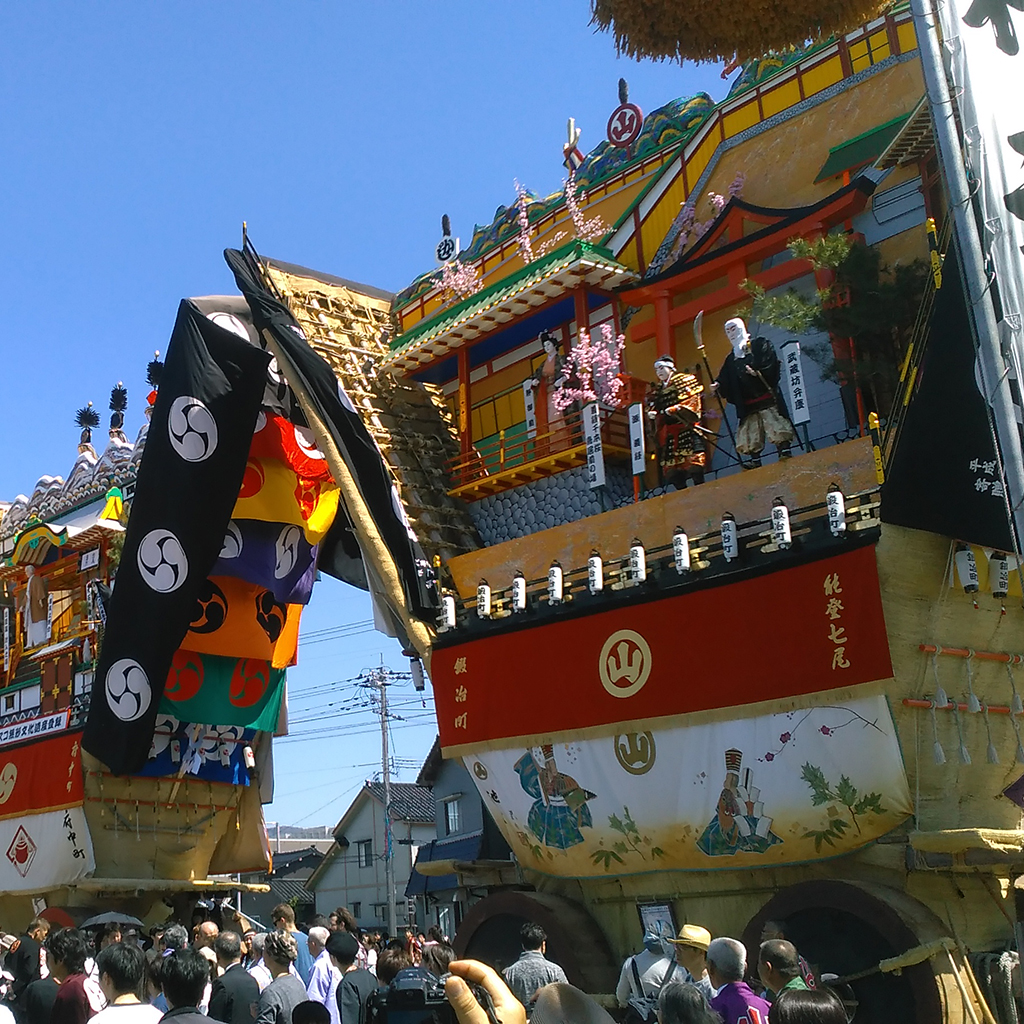
The largest float in Japan
These enormous floats grow larger at the tops, spreading out like fans, with a height of about 12 meteres, wheels of about 2 meters tall, and a weight of about 20 tons.
The top of the floats feature a reproduction of famous kabuki theater scenes, and the puppets decorating them give the floats a resplendent presence.
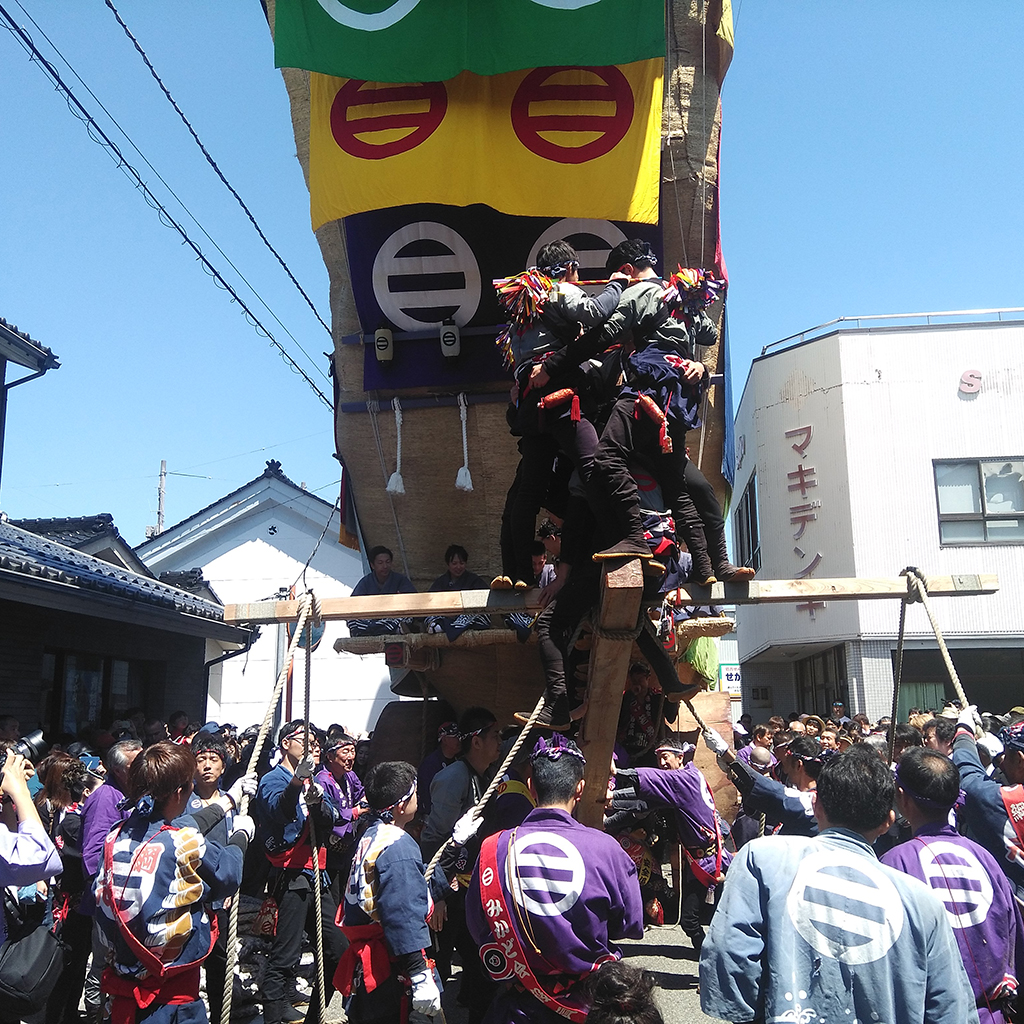
Turning the floats
Using the principal of leverage, the dekayama float's front wheel is lifted off the ground, and the nearly 20 ton float will be turned to change directions.
The sight the float nearly grazing the eaves of the nearby houses is a sight to see!
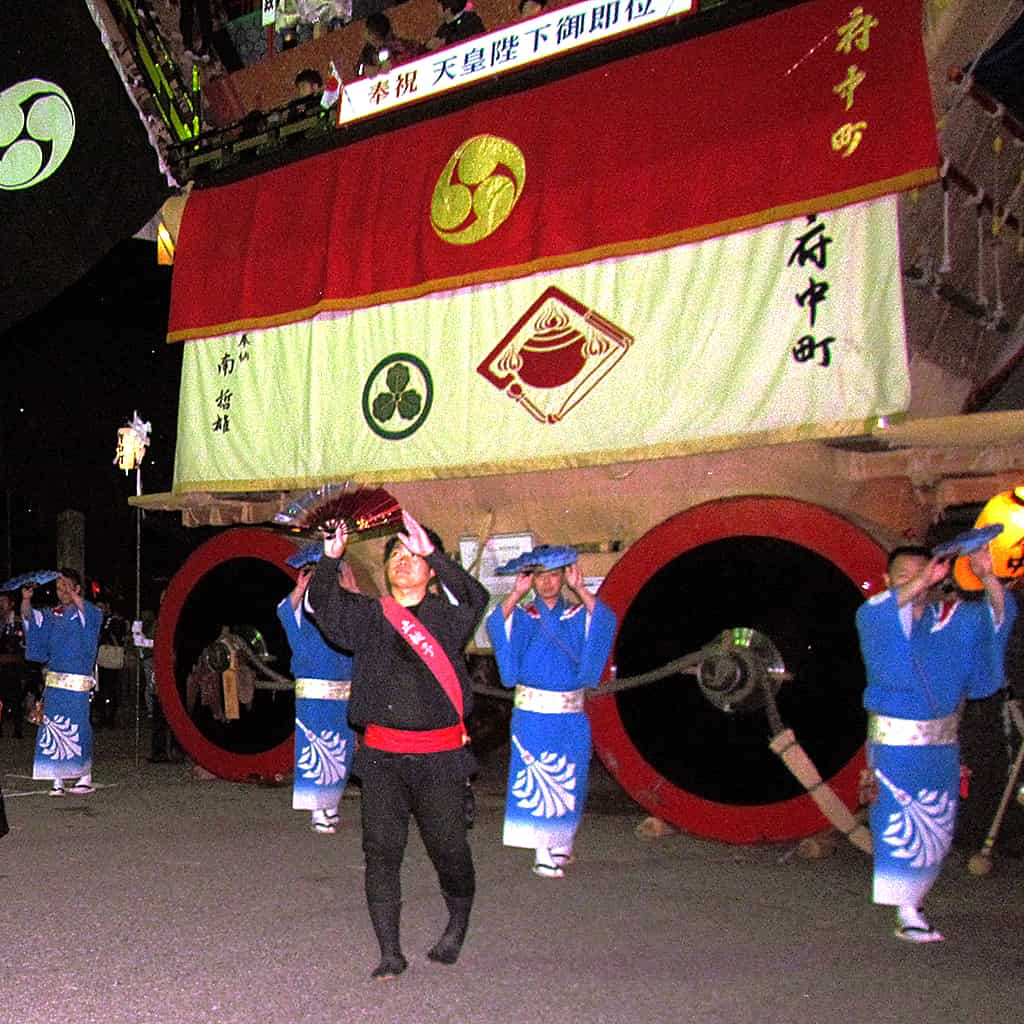
Nanao Madara
This festival song is sung solemnly to the simple sound of hand-clapping.
The "Nanao Madara" is performed at the end of the float-pulling, once the floats have been shut away.
"Nanao Madara" has also long been sung to see sailors off to sea.
The particular intonation and choreography is certain to fascinate.
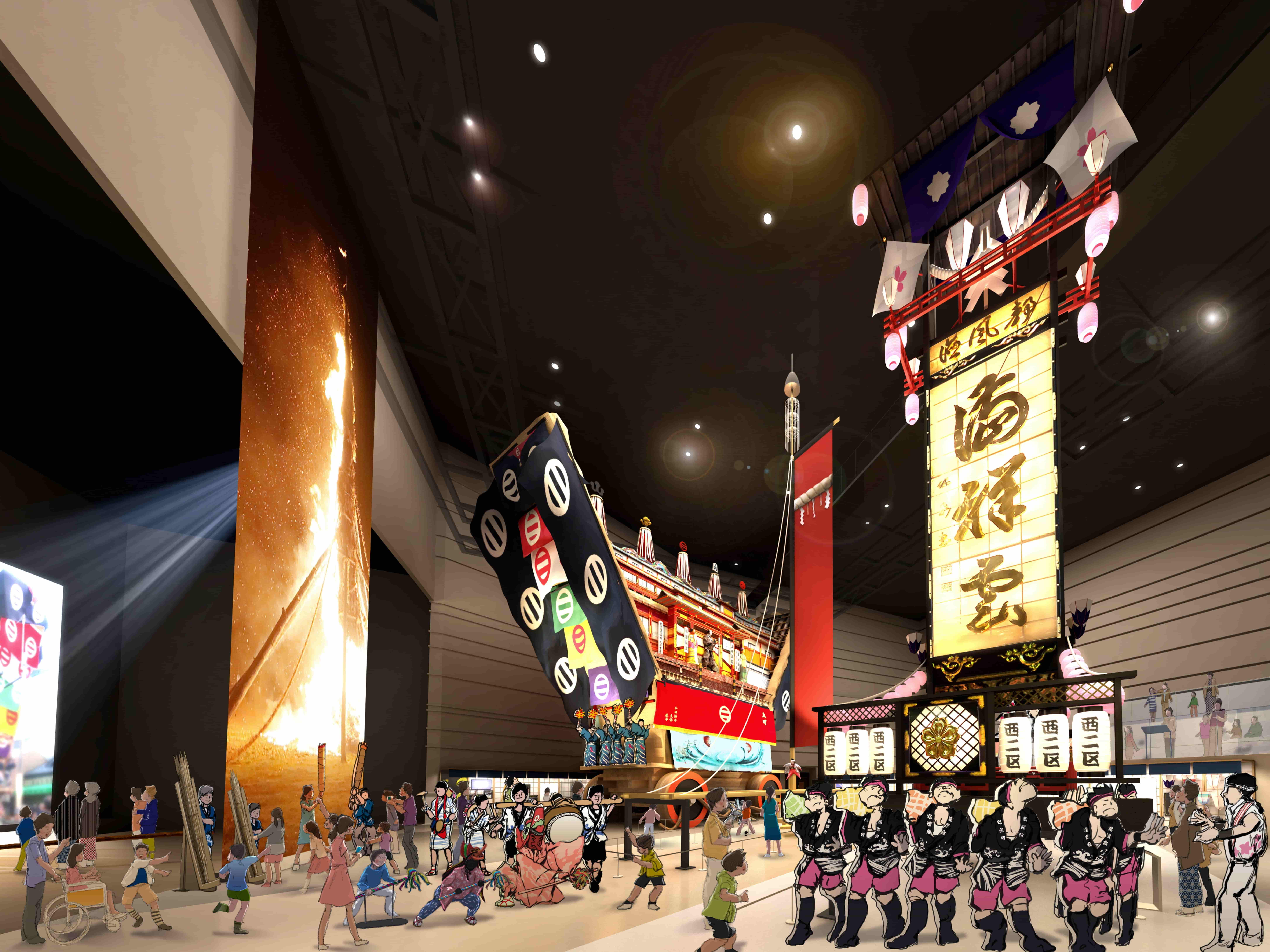
Exhibition Hall Information
| Entrance Fee | High School Students & Up 550 yen Elementary/Middle School Students: 250 yen Young Children Free / Groups (20 or more people) 450 yen |
|---|---|
| Business Hours | 9:00 a.m. - 5:00 p.m. (Entry until 4:30 p.m.) |
| Closing Days | New Years holidays (December 29th - January 3rd), while exhibitions are being changed |
| Tel | +81-767-53-8743 |
| Note | Because there is no exhibition hall dedicated to the Seihaku Dekayama Festival, we can instead introduce some characteristic exhibition halls in the area. |
Bridal curtains are traditional to Noto, Kaga, and Etchu (of former Kaga Province), dating back to the end of the Edo Period in 1868 to the Meiji Period (1868-1912). In this wedding custom, a curtain is hung at the entrance to the Buddhist altar room at the groom's house, and the bride passes through this curtain as she enters the house for the first time as his wife. At this museum's permanent exhibition, visitors can see bridal curtains from the Meiji to the Heisei (1989-2019) periods.
The museum also has special exhibitions about local wedding customs, chances for visitors to dress up in traditional wedding costumes and pass through bridal curtains, original goods for sale in its shop, and a community space with information about local sightseeing.

*Times are estimated


*Times are estimated
| Festival Period | Annually on May 3rd, 4th, & 5th |
|---|---|
| Festival Times | 9 p.m., May 5th - 11:30 p.m., May 5th |
| Venue Name | Otokonushi Shrine, Central Nanao City |
| Address | 1-13 Sanno-machi, Nanao City, Ishikawa Prefecture |
Festival viewers can help pull the dekayama floats by pulling on a large rope, so please bring cotton gloves if you wish to participate.
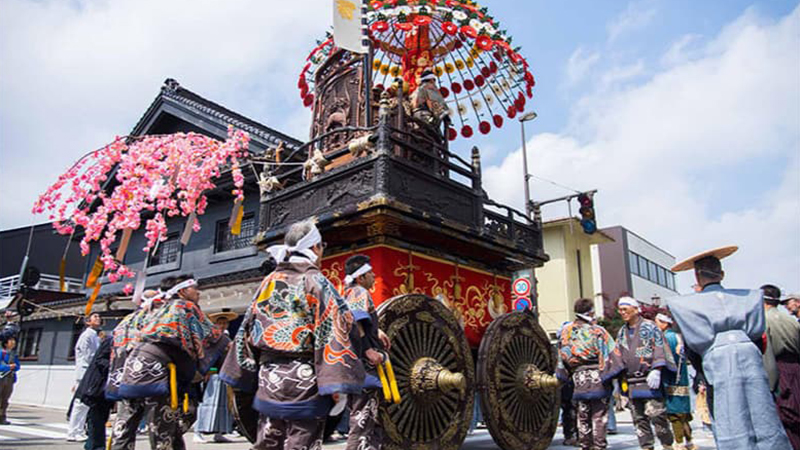
Mikuruma-yama Festival
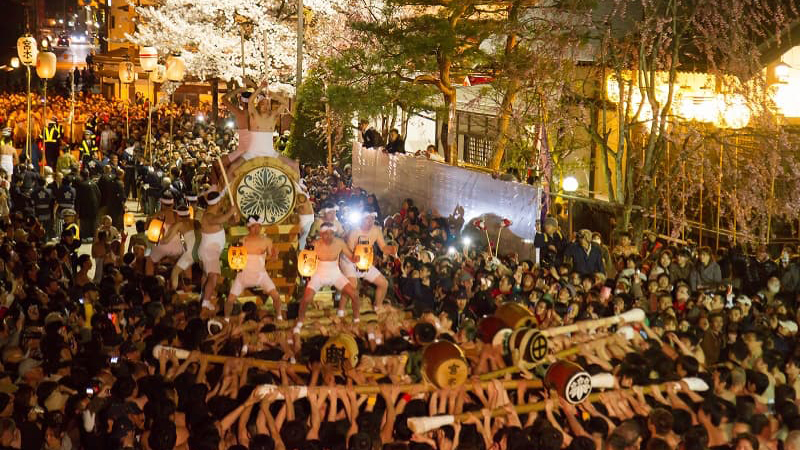
Furukawa Festival
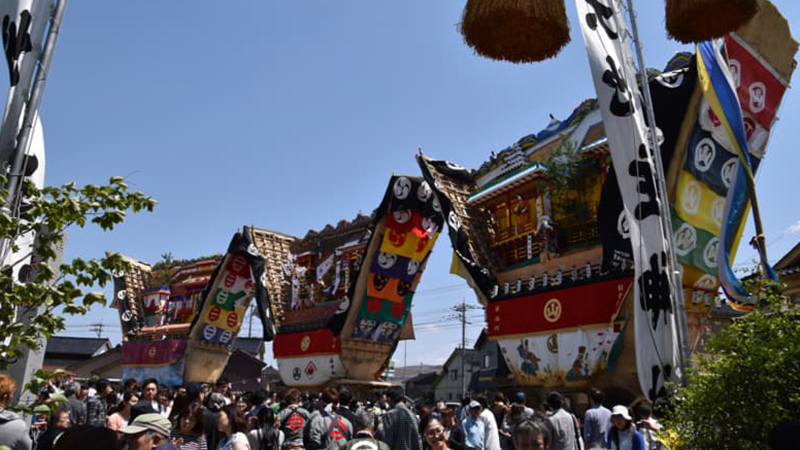
Seihaku Festival
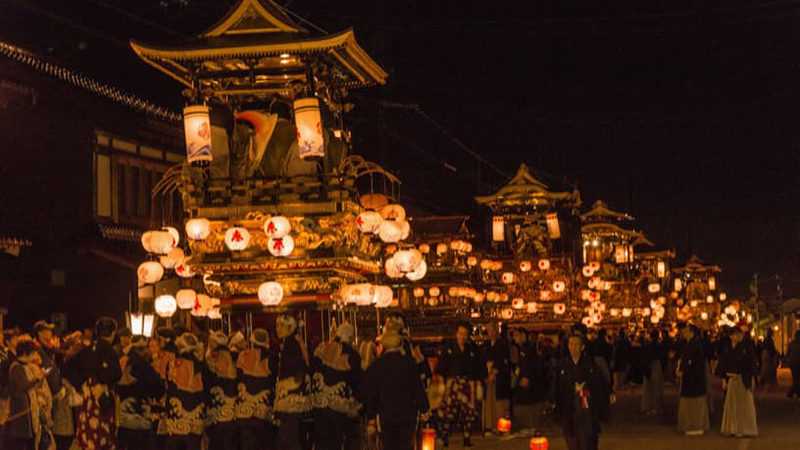
Johana Hikiyama Festival
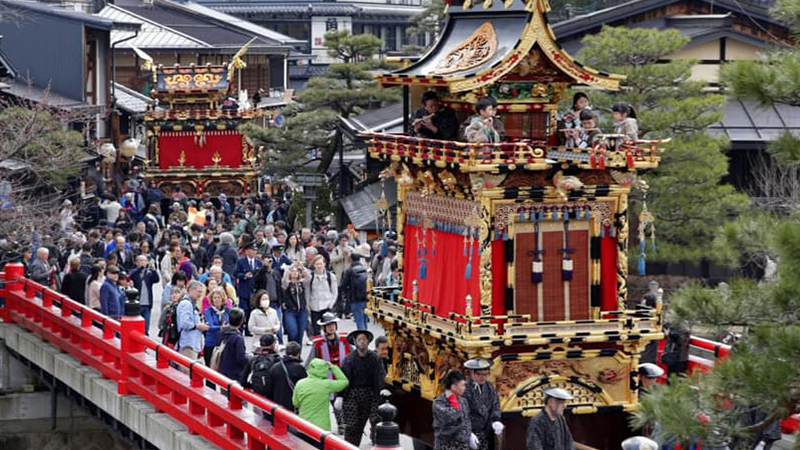
Takayama Festival